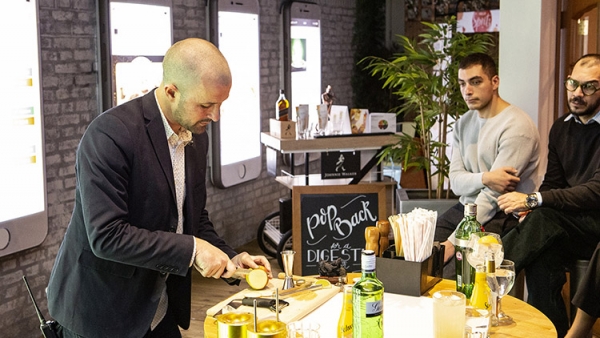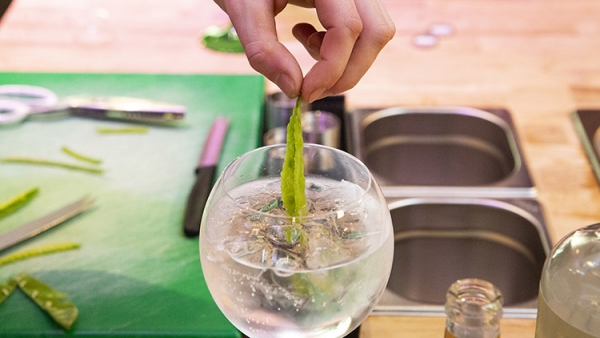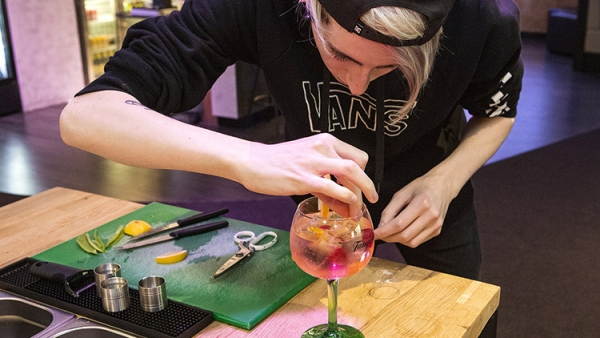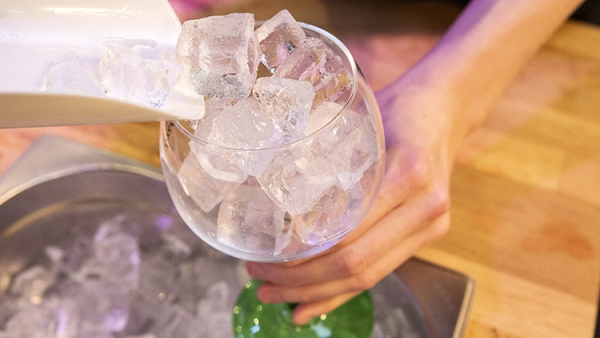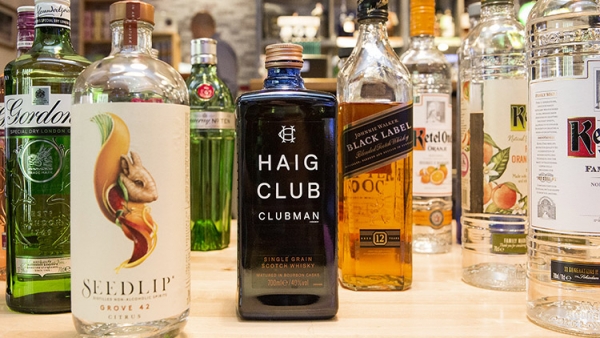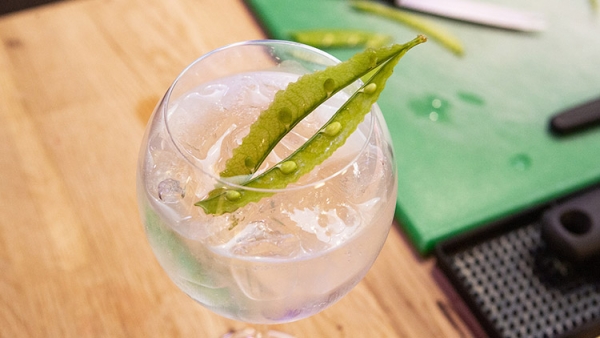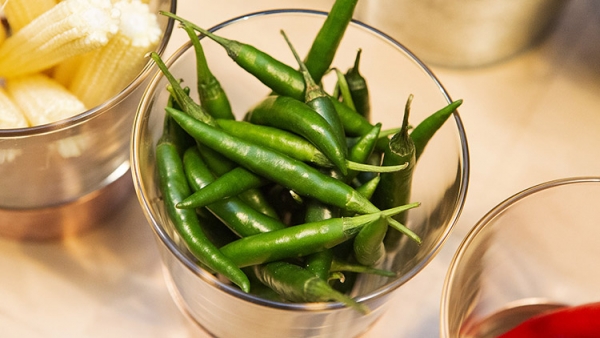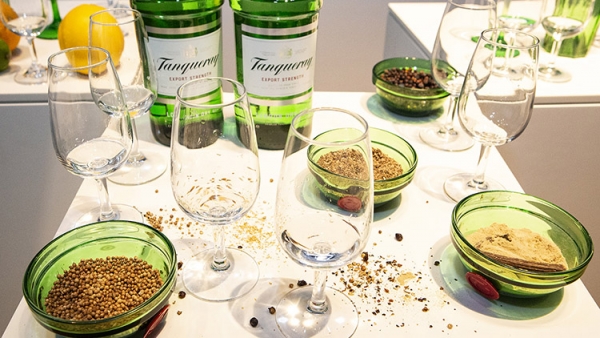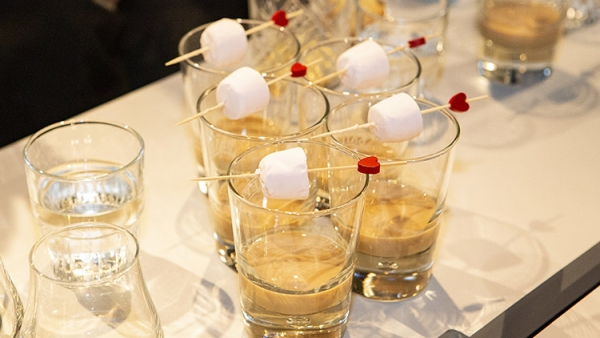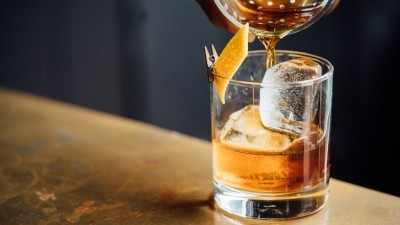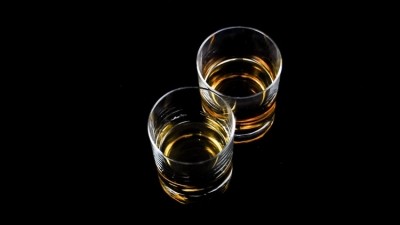In association with Diageo
How to make a drink Instagrammable
One of the biggest problems with this culture for the on-trade is that consumers can more easily buy a bottle of spirit and a premium mixer from their local shop or supermarket and have a good-quality drink at home. However, what few consumers can do in their own home is make that drink an experience the same way an on-trade outlet can.
Diageo on-trade consultant Rob Poulter summarises: “This sector is no longer about looking at whether you’re in the food or drink business, which is what we traditionally did. We don’t do that now, because you can have those sorts of experiences at home. We’re looking at how to make going out to the pub and bars an experience that you can’t get at home yourself.”
Among other things, this is one of the main reasons for the launch of the Diageo Drinks Report earlier this year, which uses market-leading insight to identify the opportunities for growth within the adult drinks sector and shines a light on how and where consumers want to experience drinks. The report forms part of the spirit producer’s category initiative ‘Transforming Drinks Experiences’, which aims to help licensees drive value and unlock the £5.2bn opportunity the category presents.
There are four pillars – Exploration, Celebration, Make the Moment and Balanced Choices – identified by the report that operators can tap into all at once to create the ultimate drinking experience, or they can choose to hone in on just one pillar at specific times of the year.
This feature looks at the Make the Moment pillar, with a focus on how operators can make simple or more substantial changes to what they’re doing to increase customer spend.
The Make the Moment segment is all about maximising consumers’ desires to have products that elevate their experiences. “It’s all about what is ‘Instagrammable’,” continues Poulter. “If a customer has an experience they want to take a picture of and share positively with their social media following, then you’ve made their moment.”
Elevating a simple drink
The easiest way of doing this is by elevating a simple drink, explains Poulter. A decade ago, people ordering a gin and tonic from the bar in a pub would have probably received it in a short wine glass, with one ice cube and a sliver of lemon, he says.
However, it’s different now. Even the most basic operation will have a selection of gins, and the standard gin and tonic will come in a highball or a copa glass with lots of ice and a wedge of citrus. However, there are ways of improving that serve further, including making it more of a cocktail.
“For example, if you have a simple Gordon’s Gin and Tonic, you can add a splash of apple juice to it, which immediately makes it into more of a cocktail,” he says. “Then you could get a slice of apple, use a cookie cutter to cut out the centre in an interesting shape, place that on top of the drink and then pin the rest of the apple slice to the side of the glass with a small peg. It immediately elevates the drink and makes it something worthy of Instagram.”
But it’s not all about Instagram, making a moment can also include how the increasingly popular tasting is handled in a pub or bar.
“You can make the mistake of doing a tasting with too many spirits, where the drinking can become irresponsible. But also, they won’t be getting the most out of the tasting because it will be a sensory overload. I’d suggest tasting vertically or horizontally.
“In a horizontal tasting with wine, you taste one vineyard’s wines by going through the years; so one variety and how that’s different over the years. Vertical tasting in wine is one year, but looking at different vineyards.
“You can apply that with gin too - so you can go horizontal and go through different flavours within the one brand. With whisky, that would be looking at the different iterations in the Johnnie Walker family. Alternatively, vertically would be looking at gins or whiskies from similar regions and comparing them.”
Get the simple serve right:
There are five things to consider when making a standard drink such as a gin and tonic, according to Diageo’s Rob Poulter.
1. Glassware: There’s the Queen Vic G&T served in a wine glass. Ten to 15 years ago, this was enjoyed in London pubs and it would have been served in that sort of small wine glass with one ice cube and a thin slice of lemon.
But you could always update your glassware every time a new product comes in or keep good-quality standard glasses for all of your drinks. Put simply, a good glass is the first part of a shareable serve.
2. Ice: More often than not, you could just be talking about ice cubes. But one might be paying the same amount for a measure of whisky in a bar as they would for a bottle in the off-trade. So, if a bartender takes a big chunk of clear ice, hand carves a big cube and then pops it in the whisky, it becomes part of the experience. Go even further and turn it into a sphere and then stamp your bar’s or whisky brand’s name into it and it is even more of an experience for the customer.
There are bars that almost have a reputation based on the quality of their ice.
We talk about using the right amount of ice. So it’s about moving away from the single cube. It’s about making sure it’s three quarters full of ice. And nobody wants the melting cubes from the bottom of an ice bucket. Make sure it’s fresh.
3. Spirit: The focal point of a drink and, if you’re thinking about how to make something shareable on social media, you need to consider what brand you’re going to use. There are advantages to using both big and small brands – a big one has more pulling power and more people talking about it on social media. A smaller brand, if you tag it into a post, is more likely to interact with you. Think about other tags to use to help gain more exposure on social media.
4. Mixer: If you’re using a mixer, it’s important to get the product and the way you serve it right. The mixer world has changed dramatically and there are so many brands out there now.
We talk about the importance of opening a fresh mixer and pouring the right amount too. We don’t want a glass so full that it’s going to spill over the glass onto the bar top. A lot of people ask if you should pour the full bottle into the glass or put the bottle at the side of the drink on the bar. The thing is to be consistent. So everyone on the bar is doing the same thing.
5. Garnish: This is the part that is going to make the difference between an ‘Instagrammable’ drink and an average one. You need to make sure the garnish reflects what’s going on in the drink, it must always have a purpose. As well as looking good, garnishes can also add aroma to a drink as customers take a sip, they can give more flavour to a drink too, but they also add to its appeal. If someone sees a beautifully garnished drink moving from the bar to someone’s table, it will make them stop and say ‘I want one’.
Props can help a tasting
Operators can take a tasting in various directions beyond just sampling the products and talking about the different notes and flavours on offer, Poulter says. For example, props can help a tasting reach another dimension and bring clarity to how a drink is being talked about.
“It’s important to bring along props as either visual or sensory aides. Getting the key botanicals for the gins you’re tasting into the hands of people can really help with the dialogue and explanations of what you’re talking about,” continues Poulter.
“When you’re tasting gin, the predominant flavour is juniper, but to help people single that botanical out in what they’re tasting, show them it. Get them to smell it and crush it in their hands and smell it again before taking a sip of their gin.”
But, finally, there’s also the ever increasing popularity of food and drink pairing. While this is certainly the done thing in wine, as well as a growing trend in beer and cider too, spirits are also the perfect liquids to help amplify, complement and cut through various types of flavours and foods.
For Poulter, there are four key words to focus on when deciding which food and drinks should go together, pointing out that it’s not an exact science, but using the rules can certainly help beginners. The four words are – Cut/Cleanse, Complement, Contrast and Combine.
Taken individually, cutting or cleansing liquids will clear a diner’s palate of textures and tastes ready for the next mouthful or course. Complement will usually have a similar flavours or tones, such as a Baileys and a marshmallow – both sweet, but different textures on the palate. Contrasting flavours will bounce off one another, so it could be a sweet drink with a sour food. Finally, combine is where the drink and the food have the same lead characteristics or flavours, as outlined below, a Chocolate Old Fashioned paired with a Chocolate Truffle.
And, in one pairing session, there’s no reason why every diner can’t go through each of the rules. It could make for a very interesting evening to offer a varied experience – from one extreme of marshmallow and Baileys to the other of a smoky whisky and blue cheese, points out Poulter.
The four Cs of pairing
The easiest tasting and most profitable is food and drink pairing, says Diageo’s Rob Poulter.
You can go really to town with food and drink pairing, and people talk about the top four things to remember when matching food with drink: Cut/Cleanse, Complement, Contrast and Combine.
Cut or cleanse: Use Villa Ascenti gin, sugar syrup, soda water and Prosecco to make a spritz and serve in a carafé so it can be shared. You could add this sort of thing to a party’s bill for when they sit down and that means the bar team then has time to go and make the table’s drinks order.
Pairing this one with smoked salmon canapés with a little lemon in them, so the drink cuts through the oiliness of the salmon and cleanses your palate.
Complement: Singleton is a fruity single malt whisky with lots of apple and pear notes and pairing this with mince pies really works because you get the fruity caramel flavours from the whisky that work with the fruit in the mince pie.
We can also take a marshmallow on a skewer, toast it a little and serve it with a Baileys. You can dip the marshmallow in the drink or you can take a bite and then a sip.
Contrast: Lagavulin with blue cheese. This is pairing two big bold flavours together and it just works. If you didn’t have a big whisky with blue cheese, or a big cheese with this whisky, it wouldn’t really work. You need them to both be big to meet in the middle. The cheese will coat your palate and the smoky whisky is almost like a seasoning to the cheese.
Combine: We have a chocolate truffle and a Chocolate Old Fashioned that’s been pre-batched so you and make it in advance and in larger quantities and serve it easily.
Take a bite of the truffle and then a sip of the Old Fashioned, the chocolate in the drink comes together with the truffle and works really well.
